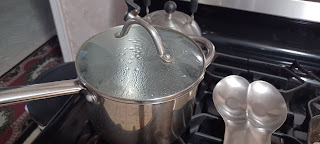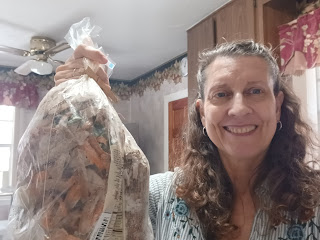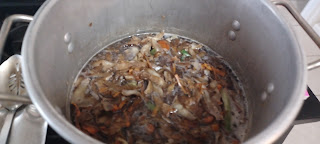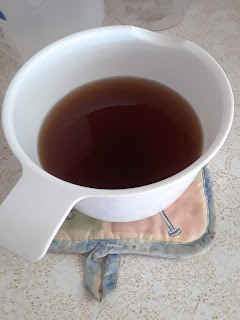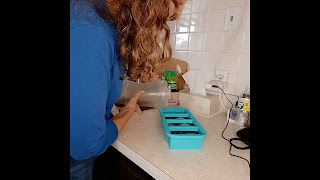Don't throw out leafy green carrot tops. Use them to make a tasty pesto sauce perfect for topping pasta or as a dip.
An abundant carrot harvest this year has given me a lot of carrot tops. I've thrown them away in the past, always wondering if there was something I use them for.
There is! Carrot tops are edible; you could add them to a salad if you wanted.
What I prefer to do is use them to make pesto. I make a big batch and freeze so I can have pesto to eat all year.
Pesto is traditionally made with basil, and if you have fresh basil, you can use it along with the carrot tops. The first time I made it, I did a mix of the two, but in Florida the seasons for carrots and basil don't overlap much.
Ingredients for Carrot Top Pesto
- Carrot Tops (and basil if you prefer)
- 1/2 cup Nuts for each cup of carrot tops (Pinenuts are traditional for pesto, but I use less expensive walnuts. Pecans are also good. If you have an abundance of a nut, try it.)
- Salt to taste
- Garlic to taste (a clove can be chopped up with everything else; fresh garlic bothers my stomach, so I use garlic powder)
- Lemon juice to taste
- 1/4 cup Olive Oil for each cup of carrot tops
- Hard cheese such as Parmesean or romano to taste
To Make the Pesto
- Remove the leafy parts of the carrot tops from the larger stems. Wash and drain. Pat dry to remove as much water as possible.
- Put nuts in the bowl of a large food processor and pulse to chop up. Add in as many of the carrot tops as will fit, then pulse to break up. Scrape the bowl of the processor, and add more carrot tops. Pulse several times. If using fresh garlic, add it now.
- Once everything is finely chopped, add the salt, lemon juice, and garlic powder (if not using fresh garlic).
- Turn the processor on high and let it run. Through the tube, slowly add the olive oil, a few tablespoons at a time. Check the consistency and add more oil. Scrape down sides of bowl as needed.
- Continue processing, adding oil a few tablespoons at a time, until reaching desired consistency.
- If you are going to eat the pesto immediately, add the cheese now, and process to distribute it. Serve over warm pasta. If you are going to freeze the pesto for later use, do not add cheese, and follow steps below.
To Freeze the Pesto
- I use an old ice cube tray, and fill each compartment with the pesto.
- Place it in the freezer until frozen, several hours or overnight.
- To remove from tray, run a dull knife (such as a table knife) around the edge of each cube to help release it, and store in a freezer bag until needed.
To Use Frozen Pesto
- When ready to use, pull out the number of cubes needed. (I find 3-4 work good for one serving).
- Put in a pan over low heat.
- As they thaw, stir and add more olive oil if needed.
- When heated through, stir in grated hard cheese of your choice. Serve over warm pasta, or use as a dip.


